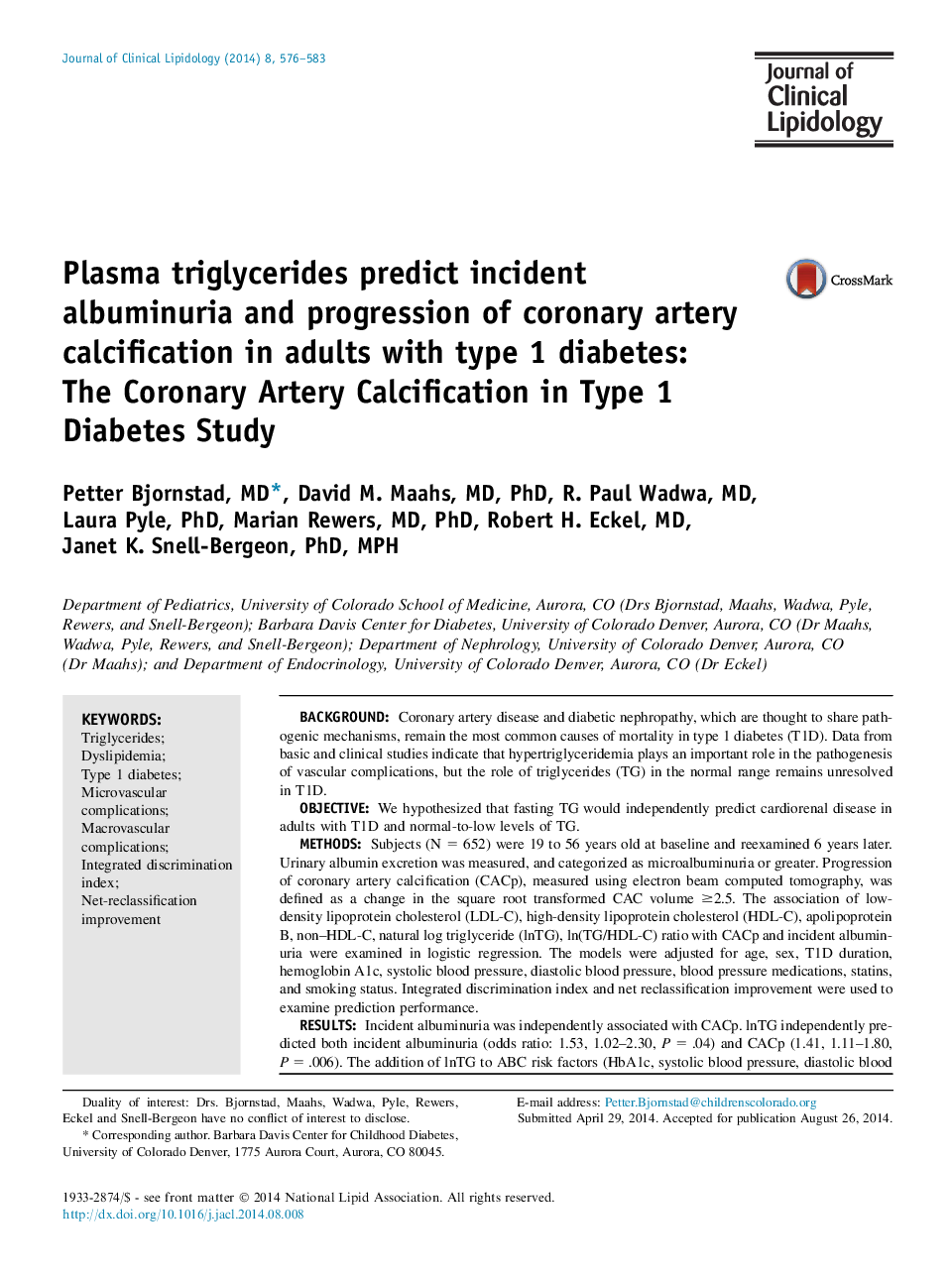| Article ID | Journal | Published Year | Pages | File Type |
|---|---|---|---|---|
| 5985833 | Journal of Clinical Lipidology | 2014 | 8 Pages |
âºWe examined the associations between lipids and cardiorenal disease in type 1 diabetes.âºAdults with type 1 diabetes had low-to-normal levels of triglycerides.âºOnly triglycerides were independently associated with cardiorenal disease.âºTriglycerides improved discrimination and classification of cardiorenal disease.
BackgroundCoronary artery disease and diabetic nephropathy, which are thought to share pathogenic mechanisms, remain the most common causes of mortality in type 1 diabetes (T1D). Data from basic and clinical studies indicate that hypertriglyceridemia plays an important role in the pathogenesis of vascular complications, but the role of triglycerides (TG) in the normal range remains unresolved in T1D.ObjectiveWe hypothesized that fasting TG would independently predict cardiorenal disease in adults with T1D and normal-to-low levels of TG.MethodsSubjects (N = 652) were 19 to 56 years old at baseline and reexamined 6 years later. Urinary albumin excretion was measured, and categorized as microalbuminuria or greater. Progression of coronary artery calcification (CACp), measured using electron beam computed tomography, was defined as a change in the square root transformed CAC volume â¥2.5. The association of low-density lipoprotein cholesterol (LDL-C), high-density lipoprotein cholesterol (HDL-C), apolipoprotein B, non-HDL-C, natural log triglyceride (lnTG), ln(TG/HDL-C) ratio with CACp and incident albuminuria were examined in logistic regression. The models were adjusted for age, sex, T1D duration, hemoglobin A1c, systolic blood pressure, diastolic blood pressure, blood pressure medications, statins, and smoking status. Integrated discrimination index and net reclassification improvement were used to examine prediction performance.ResultsIncident albuminuria was independently associated with CACp. lnTG independently predicted both incident albuminuria (odds ratio: 1.53, 1.02-2.30, P = .04) and CACp (1.41, 1.11-1.80, P = .006). The addition of lnTG to ABC risk factors (HbA1c, systolic blood pressure, diastolic blood pressure, and LDL-C) moderately improved discrimination and reclassification of CACp and incident albuminuria.ConclusionIn adults with T1D, fasting TG independently predicted cardiorenal disease over 6 years and improved reclassification of risk by conventional risk factors.
